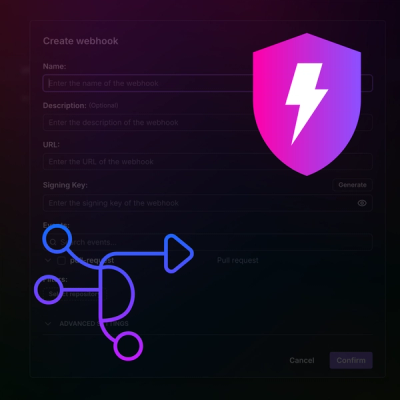
Product
Introducing GitHub Actions Scanning Support
Detect malware, unsafe data flows, and license issues in GitHub Actions with Socket’s new workflow scanning support.
@runnable/api-client
Advanced tools
Runnable Api Client
var user = new Runnable();
var user = new Runnable();
user.githubLogin(function (err, body) {
// ...
});
var user = new Runnable();
user.githubLogin(token, function (err, body) {
// ...
});
var user = new Runnable();
user.logout('user', 'pass', function (err, body) {
// ...
});
var user = new Runnable();
user.login('user', 'pass', function (err, body) {
// fetch a specific resource
var project = user.fetchProject(projectId, function (err, body, code) {
// project becomes a project model
});
// factory methods and parent actions
project = user.newProject(attrs, opts);
project = user.fetchProject(projectId, cb);
project = user.createProject({ json: data }, cb);
project = user.updateProject(projectId, { json: data }, cb);
user.destroyProject(projectId, cb);
// model methods
project.fetch(cb); // fetch latest
project.update({ json: attrs }, cb); // update the resource attrs
project.destroy(cb); // delete the resource through the api
project.toJSON(); // last clientside known state of the resource
// fetch a collection of resources
var projects = user.fetchProjects(projectId, function (err, body, code) {
// project becomes a collection of projects
});
projects.models; // are all models of the resources fetched
});
Runnable api client's directory structure follows the api url structure and the structure of our resources.
Project environments are a nested resource - /projects/:id/environments/:id
Note: the singular form of each resource used for the folder and file names.
'use strict';
var util = require('util');
var Base = require('../base');
var urlJoin = require('../../url-join');
module.exports = Environment;
function Environment (attr, opts) {
opts = opts || {};
opts.urlPath = urlJoin(opts.parentPath, 'environments');
return Base.apply(this, arguments);
}
util.inherits(Environment, Base);
All (99%) of the new models will inherit from the Base Model class like the example above.
Nested Models use urlJoin(opts.parentPath, <relativePath>) create their urlPath using
opts.parentPath. opts are being passed to the constructor from extend-with-factories
which is explained below. First level resources like Projects (/projects), just need their
urlPath set directly Projects.prototype.urlPath = 'projects' or opts.urlPath = 'projects'.
The parent model in this example is Project. Here is the Project Class:
var util = require('util');
var Base = require('./base');
module.exports = Project;
function Project () {
return Base.apply(this, arguments);
}
util.inherits(Project, Base);
Project.prototype.urlPath = 'projects';
Add the following line to the parent model to automagically create submodel factory/action methods:
require('../extend-with-factories')(Project);
var projectId = "real-project-id";
var user = new Runnable(), environment;
user.anonymous(function (err) {
if (err) { throw err; }
var project = user.fetchProject(projectId, function (err) {
if (err) { throw err; }
// automagical environment factory methods:
environment = project.newEnvironment(attrs, opts); // create a new environment instance
environment = project.fetchEnvironment(projectId, cb); // fetches an environment instance from the api server
environment = project.createEnvironment({ json: attrs }, cb); // makes a post request to create a new environment
// automagical environment action methods:
project.updateEnvironment(projectId, { json: attrs }, cb);
project.destroyEnvironment(projectId, cb);
// Action methods inherited by the Base Model
environment.fetch(cb); // get latest data from server
environment.update({ json: attrs }, cb);
environment.destroy(cb);
});
});
Creating a collection is very similar to the model example. The only difference is that you
should inherit from the Base collection. Also, factory methods created use the plural form
of the resource name - Ex: project.getEnvironments(cb). There are examples of all types of
models and collections (first level and nested), when in doubt look for an existing example
in the code base.
FAQs
Runnable API Client
We found that @runnable/api-client demonstrated a not healthy version release cadence and project activity because the last version was released a year ago. It has 1 open source maintainer collaborating on the project.
Did you know?

Socket for GitHub automatically highlights issues in each pull request and monitors the health of all your open source dependencies. Discover the contents of your packages and block harmful activity before you install or update your dependencies.

Product
Detect malware, unsafe data flows, and license issues in GitHub Actions with Socket’s new workflow scanning support.

Product
Add real-time Socket webhook events to your workflows to automatically receive pull request scan results and security alerts in real time.

Research
The Socket Threat Research Team uncovered malicious NuGet packages typosquatting the popular Nethereum project to steal wallet keys.